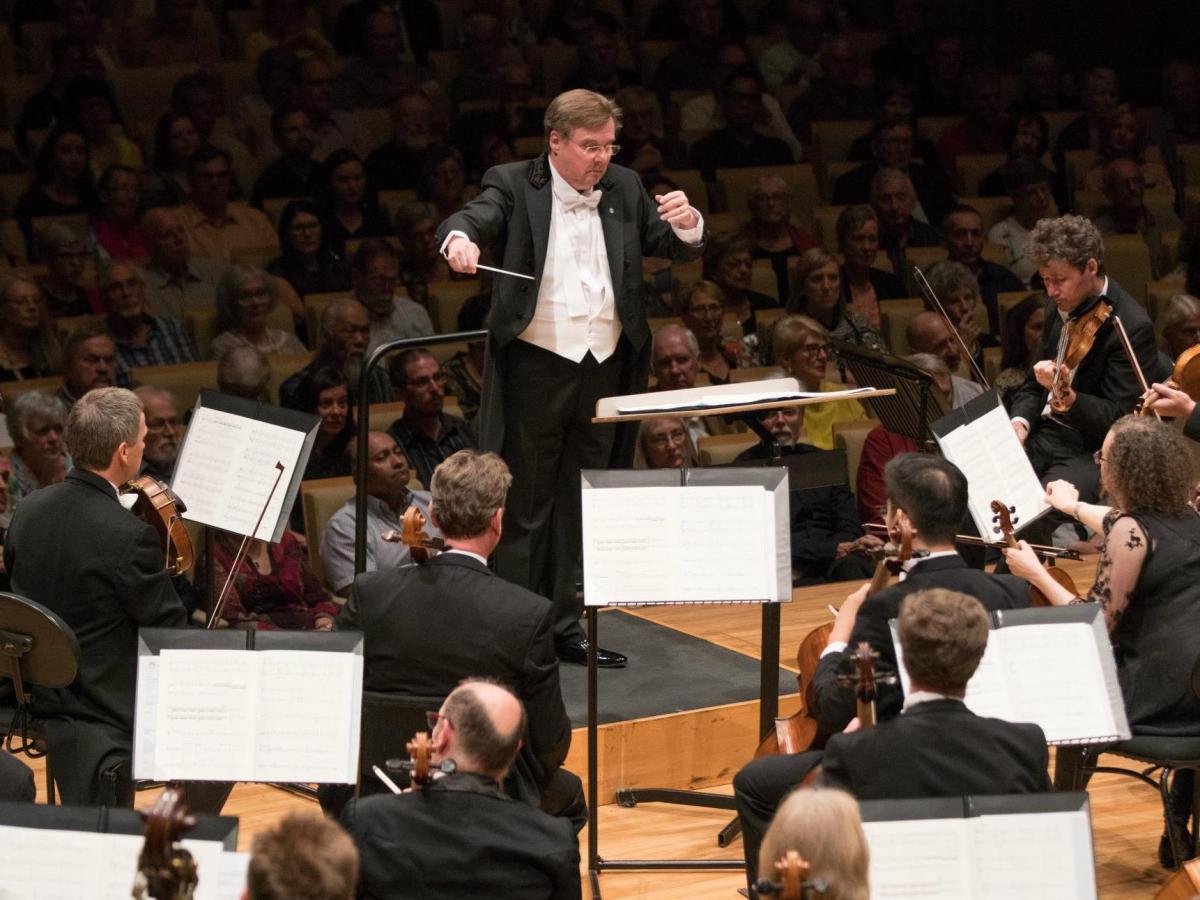Photo credit: Peter Wallis
Tragedy and death have inspired many great evergreens in the classical canon. The carefully chosen works by Stravinsky, Britten, Whitacre and Faure in this program were each theatrically charged, with grief, harrowing circumstance, extreme weather, snapshots of the rugged Suffolk coastline and death.
There was plenty of musical drama to engage the audience. Especially, as program content celebrated the beauty and persuasive power of the voice and the infinite sonic possibilities in instrumental and choral combinations.
Stravinsky’s Funeral Song, which began Saturday’s night’s concert, is a recently rediscovered work. Written as a tribute to Rimsky-Korsakov, Stravinsky’s creative mentor, the composer noted, ‘that all the solo instruments of the orchestra filed past the tomb of the master in succession, each laying down its melody as its wreath…’ The shimmered string passages according to the composer, conjure the vibration of massed bass voices.
Lost for over a century, it was an intriguing opener with its wealth of colourful sonorities. The late romantic chromaticism, the distinctive rhythmical currents, dark harmonic corners that recall the sound-world of Rimsky-Korsakov, was expertly navigated by conductor Stefan Parkman, who replaced Alondra de la Parra – currently on parental leave. As a rewarding introductory vehicle, it shared the limelight across all of the Orchestra’s forces.
Britten’s vivid Four Sea Interludes Op 33a from the opera Peter Grimes – Dawn, Sunday Morning, Moonlight and Storm – tonal snapshots of the sea, sounded under-rehearsed because there was scope for greater definition and differentiation. However, staging Faure’s Requiem with all the coordination involved would have devoured rehearsal time. Even so, in heightened moments, it was possible to imagine cooling sea spray on the skin, the scream of wheeling seagulls in the higher reaches of the strings, glittery light on the ocean’s surface and finally lashing rain in Storm that also charts the roiling torment of Grimes, the fisherman, goaded to the brink of madness.
Whitacre’s cinematic Cloudburst, where an eight-part choir, piano and percussion channel a thunderstorm was rendered with aplomb. The rise and fall, light and shade and exquisite shaping of choral sound with accomplished soloists stunned the crowd. Some were even heard to say it was the concert’s stand out.
Faure’s Requiem is devised on a more intimate scale than Brahms and Berlioz equivalents. An agnostic, Faure steered clear of setting Dies Irae with the last judgement’s fire and brimstone. Wrapped in gorgeous harmonies and tonal effects and boasting divine solos, such as Pie Jesu, it’s a crowd-pleaser, a charmer. Pie Jesu rendered by the youthful silvery, beautiful soprano of Morgan England-Jones melted the heart. Teddy Tahu Rhodes added gravitas, power and persuasive resonance in Libera Me.
Parkman’s warmth and assured direction of the soloists, the Orchestra and The Australian Voices, with its classy sound and polished musicianship, was deft and attentive in illuminating Faure’s ethereal yet highly detailed choral writing with its abundant harmonic subtleties and shifts in dynamics.
★★★☆
Faure Requiem
Queensland Symphony Orchestra
Maestro Series
QPAC Concert Hall, Brisbane
7 April




